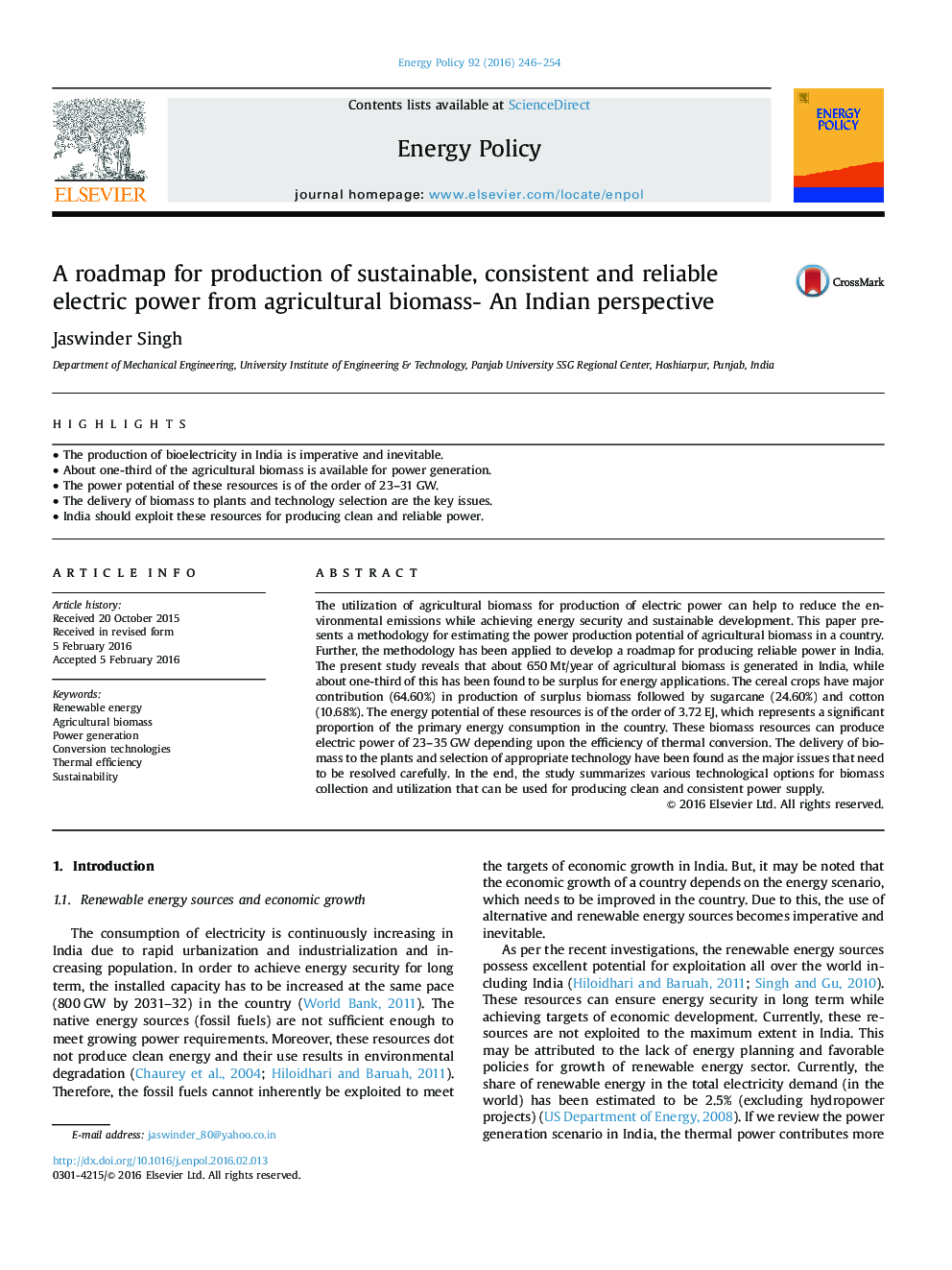| Article ID | Journal | Published Year | Pages | File Type |
|---|---|---|---|---|
| 7399619 | Energy Policy | 2016 | 9 Pages |
Abstract
The utilization of agricultural biomass for production of electric power can help to reduce the environmental emissions while achieving energy security and sustainable development. This paper presents a methodology for estimating the power production potential of agricultural biomass in a country. Further, the methodology has been applied to develop a roadmap for producing reliable power in India. The present study reveals that about 650Â Mt/year of agricultural biomass is generated in India, while about one-third of this has been found to be surplus for energy applications. The cereal crops have major contribution (64.60%) in production of surplus biomass followed by sugarcane (24.60%) and cotton (10.68%). The energy potential of these resources is of the order of 3.72Â EJ, which represents a significant proportion of the primary energy consumption in the country. These biomass resources can produce electric power of 23-35Â GW depending upon the efficiency of thermal conversion. The delivery of biomass to the plants and selection of appropriate technology have been found as the major issues that need to be resolved carefully. In the end, the study summarizes various technological options for biomass collection and utilization that can be used for producing clean and consistent power supply.
Keywords
Related Topics
Physical Sciences and Engineering
Energy
Energy Engineering and Power Technology
Authors
Jaswinder Singh,
